
Reflections capture our imagination because they create an alternate vision of our world. If the reflection is perfect, then that vision is a literal representation of what we experience. If the reflection is imperfect, that vision becomes abstract. Either way, incorporating reflections into your photos will challenge the viewer’s visual perceptions.
In your next assignment for the Outdoor Photography Guide Photo Challenge, you’re going to explore the artistic use of reflections. But we encourage you to go way beyond just mirrors and water! Read through this post for specific tips and creative ideas for shooting reflections, and make sure to check out the inspiration gallery below.
But first, watch this video for some words of advice on photographing reflections from this week’s guest expert, Justin Reznick:
Remember to join the Photo Challenge Facebook Group to share your shots from this week’s assignment!
Tips for photographing reflections
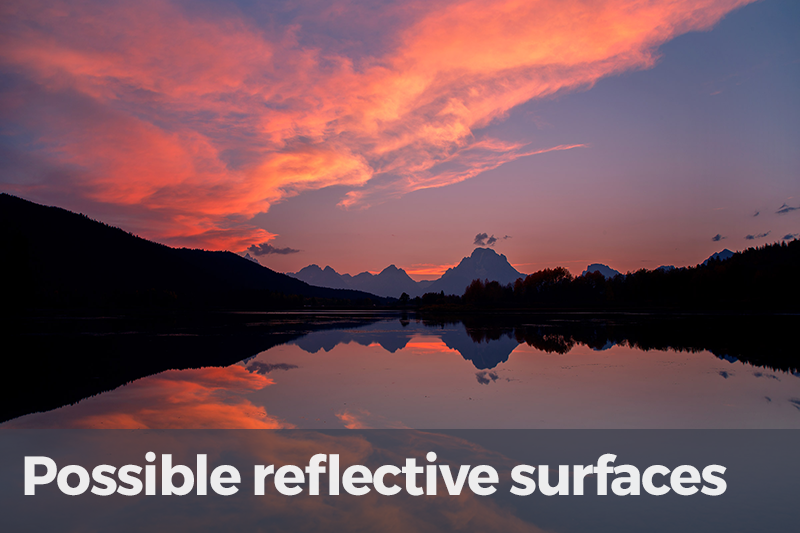
Technically, a reflection is simply the throwing back by a surface of light without absorbing it. Almost everything reflects light, but what we’re concerned about here are things that reflect a lot of light. Mirrors are obviously at the top of the list, but water is extremely reflective as well (with still water appearing almost mirror-like under the right conditions). Of course, other surfaces reflect well too, although not necessarily with the same intensity and perfection as a mirror or still water. Moving water, wet surfaces, ice, polished metal, glass, and coated plastic can all be used effectively to create reflections. Here, still water creates a seemingly perfect reflection of sunset over the mountains. Photo by Ian Plant. Grand Teton National Park, USA. Canon 5DII, 24mm, ISO 50, f/11, 2 seconds.

Perfect reflections (or near-perfect, at least) are great for creating images that use symmetry. The juxtaposition of a subject and its mirror image can create interesting shapes. For this image, the clouds in the sky alone wouldn’t be all that interesting, but when combined with their reflection, an eye-catching radiating pattern emerges. Photo by Ian Plant. Torres del Paine National Park, Chile. Canon 5DIII, 16mm, ISO 50, f/11, 1/10 second.

I lay down as this Sally Lightfoot crab approached me, and then I waited for a wave to sweep in, covering the sand in a thin layer of water, in order to include the crab’s reflection as part of the composition. Although I got drenched by an incoming wave, it was worth it! Photo by Ian Plant. Galapagos National Park, Ecuador. Canon 5DIII, 165mm, ISO 100, f/4, 1/200 second.
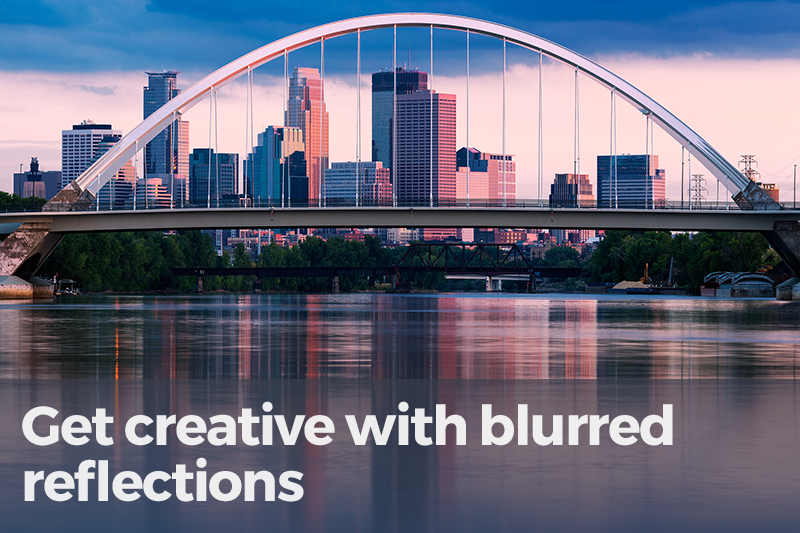
Imperfect reflections can add an element of abstraction to your photos. Here, I chose a symmetrical composition of the bridge and city skyline, and the reflections in the moving water below. The reflection is rendered as an abstract blur, which adds visual interest to the composition and a dash of creative impressionism. Photo by Ian Plant. Minneapolis, USA. Canon 5DIII, 155mm, ISO 50, f/11, 3.2 seconds.

A polarizer filter is your “secret weapon” when photographing reflections. Although a polarizer filter turned to full polarization is designed to remove reflections, some scenes with colorful reflections benefit from creative polarization. For this photo of fall color reflected in a stream, I avoided full polarization, instead spinning the filter until I found a setting which brought out the best colors in this image. This technique won’t work well with all reflection images, but scenes with a lot of water and exposed wet surfaces seem to benefit most. Photo by Ian Plant. Adirondack State Park, USA. Canon 1DsII, 116mm, polarizer filter, ISO 50, f/16, 1.6 seconds.
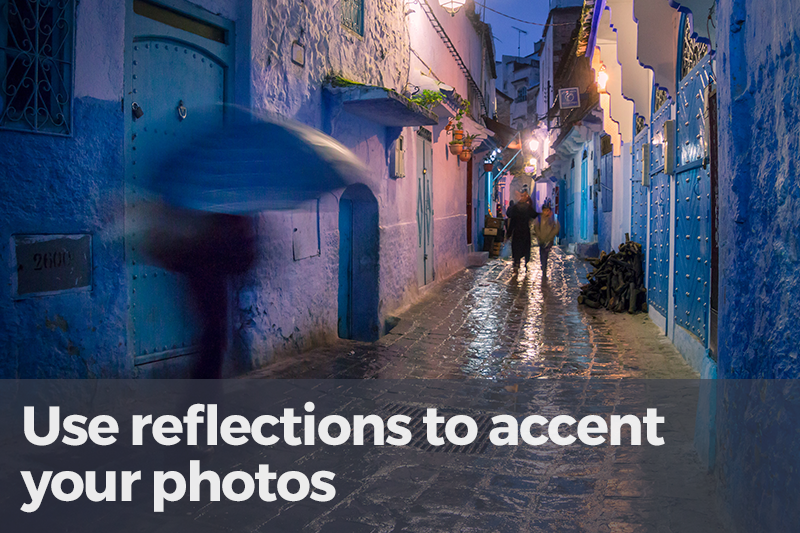
Reflections don’t always have to be a prominent element of your photos. Here, reflections in fresh rainwater on the city streets help bring color and luminosity to the dark flagstones. Instead of being a significant element of the photo, the reflections instead merely accent the composition. Photo by Ian Plant. Chefchaouen, Morocco. Canon 70D, 16mm, ISO 800, f/6.3, 0.4 seconds.
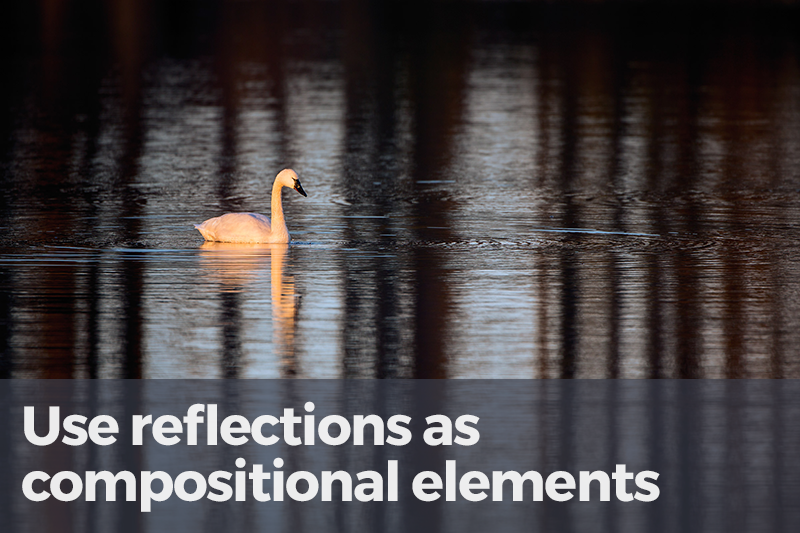
For this photo of a tundra swan lit by sunset light, I waited until the swan swam through reflections of tree trunks. The dark lines add complexity to the composition, transforming the photo into something more interesting. Photo by Ian Plant. Chincoteague National Wildlife Refuge, USA. Canon 5DIII, 700mm, ISO 200, f/5.6, 1/200 second.
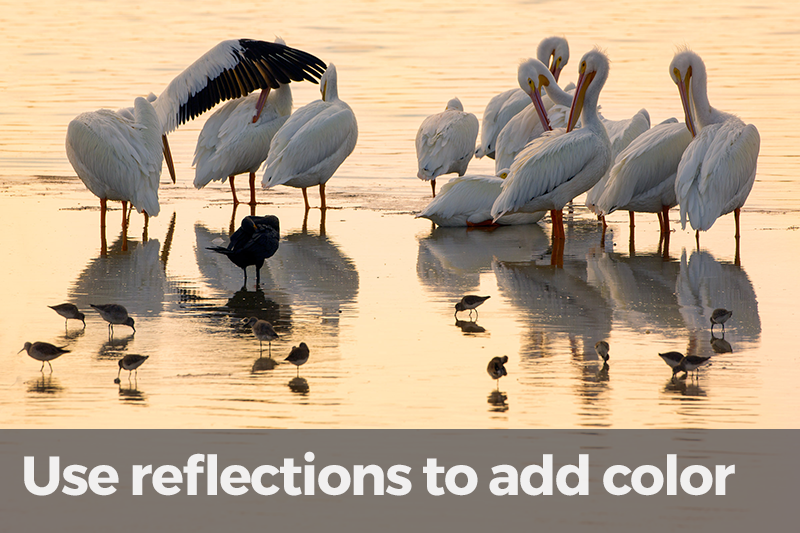
In this photo the rippled water created indistinct reflections, so I didn’t try to incorporate the reflections of the birds as a major element of the composition. Rather, I used the reflection of sunset in the water to add some much needed color to the photo. Photo by Ian Plant. J.N. Ding Darling National Wildlife Refuge, USA. Canon 5DIII, 500mm, ISO 100, f/11, 1/320 second.
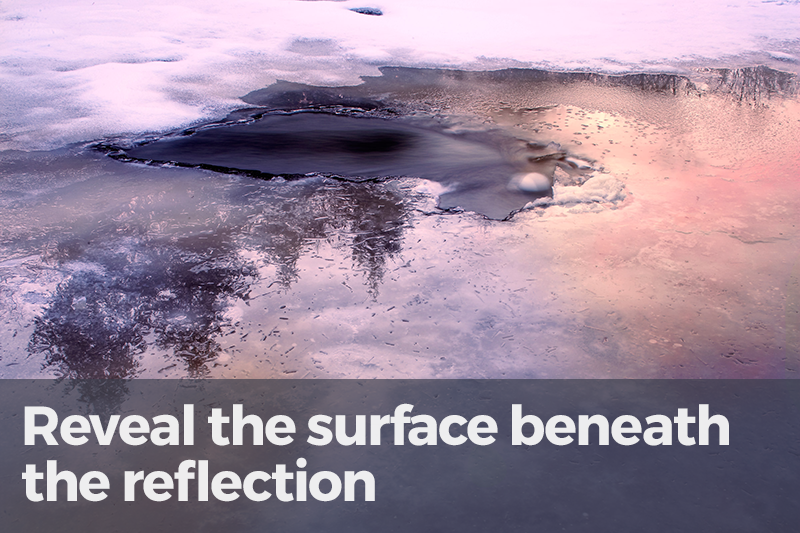
For this photo, I zoomed in on sunset colors reflected in river ice. Since the ice reflects poorly, the result is a mix of reflections and the ice texture revealed beneath the reflections. Photo by Ian Plant. Eau Claire River, USA. Canon 1DsII, 45mm, ISO 100, f/16, 4 seconds.
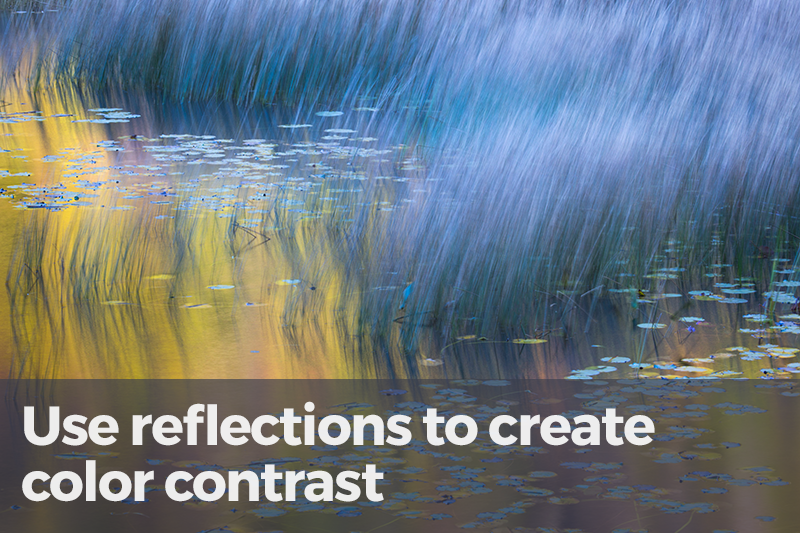
For this image of autumn color reflected in wind-blurred waters, I zoomed in to create an abstract study of color and shape. The fall foliage was in the sunlight, whereas the marsh grass was lit only by light reflecting from the blue sky above. The juxtaposition of the two opposing colors creates a pleasing, artistic effect. Photo by Ian Plant. Acadia National Park, USA. Canon 5DIII, 170mm, polarizer filter, ISO 100, f/22, 2 seconds.
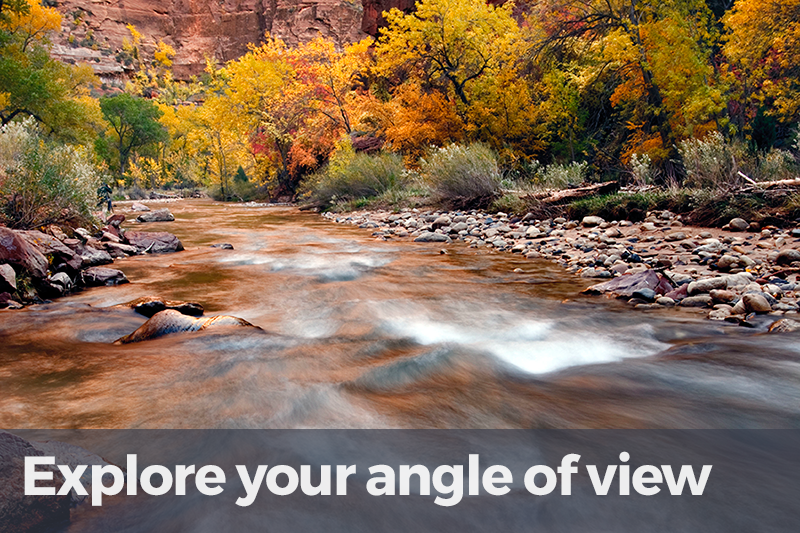
Where you stand will have a great impact on the appearance of reflections. For this image, I had to wade into the stream and set up my camera just inches away from the flowing water, in order to get low enough to see the reflection of the sunlit canyon wall in front of me. Photo by Ian Plant. Zion National Park, USA. Canon 5DII, 19mm, ISO 100, f/16, 1.6 seconds.
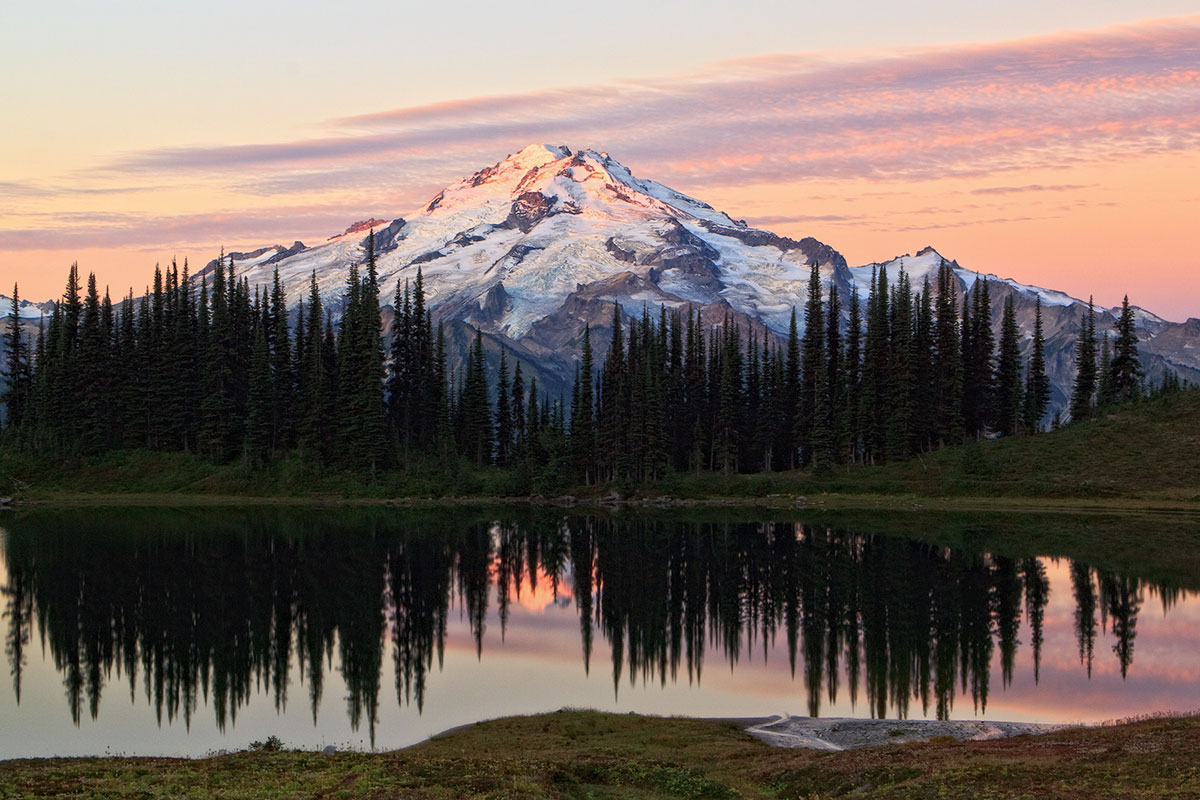
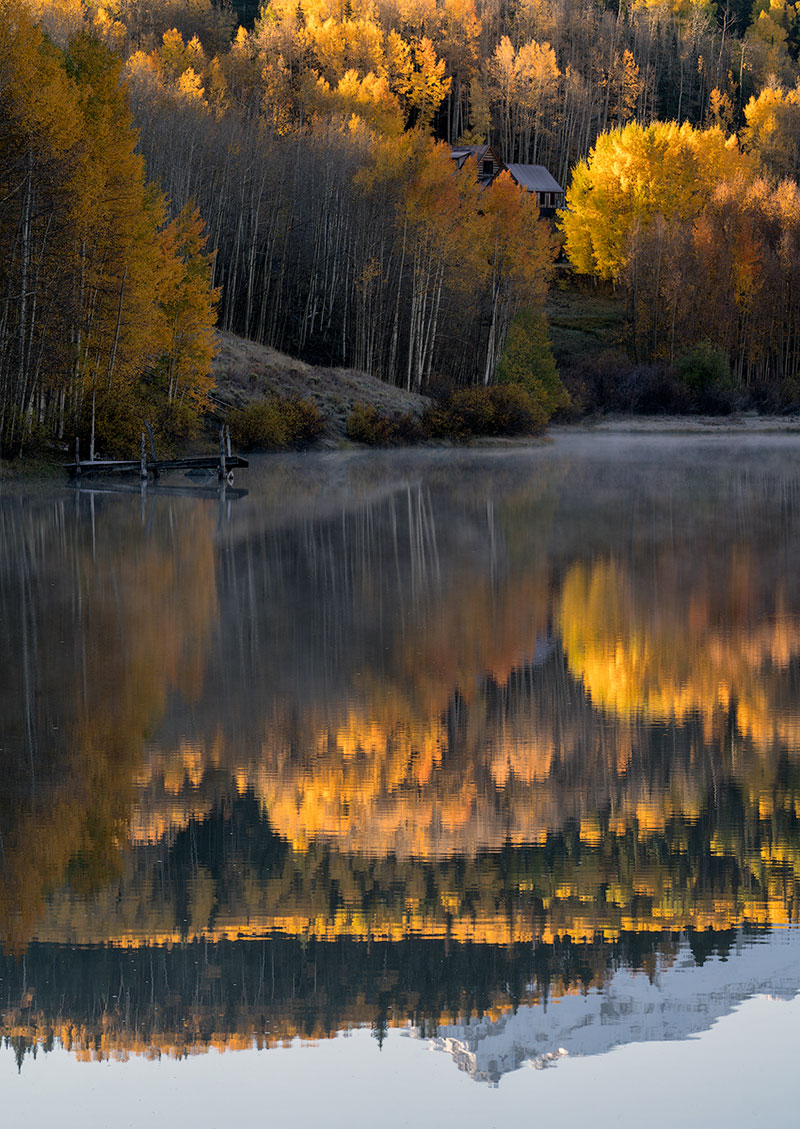

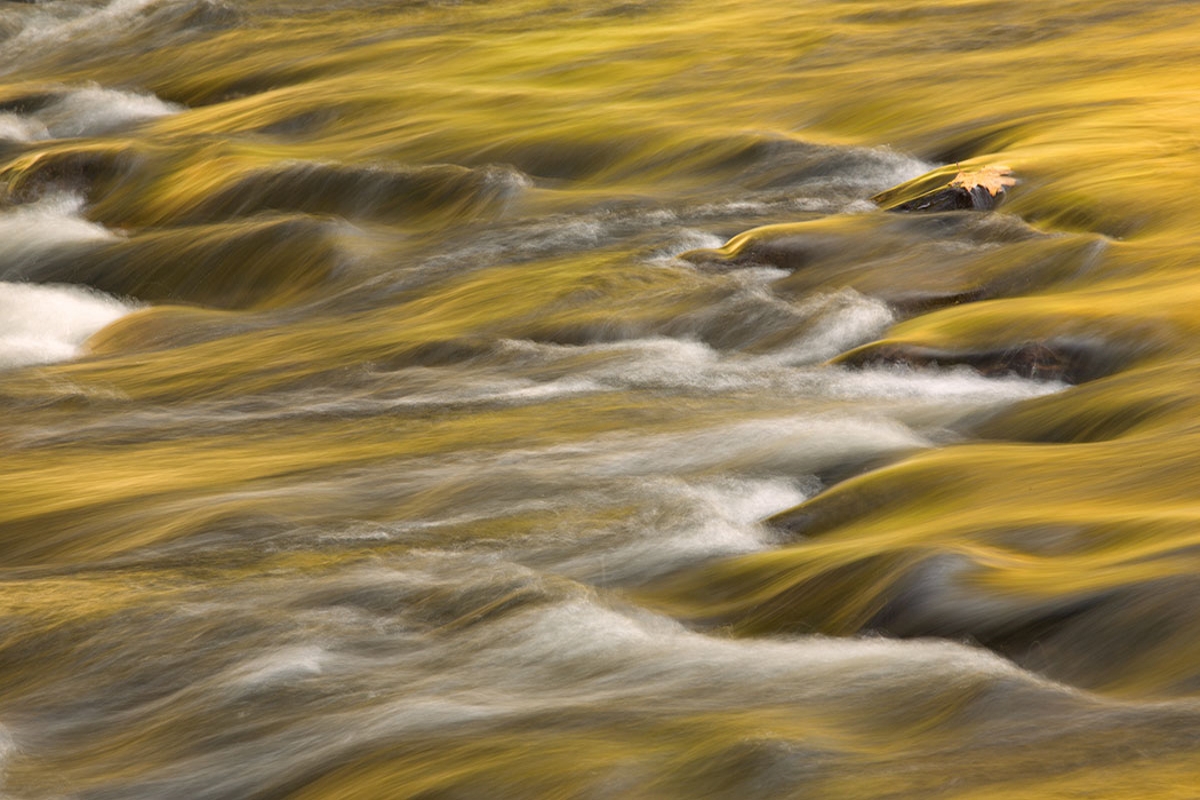
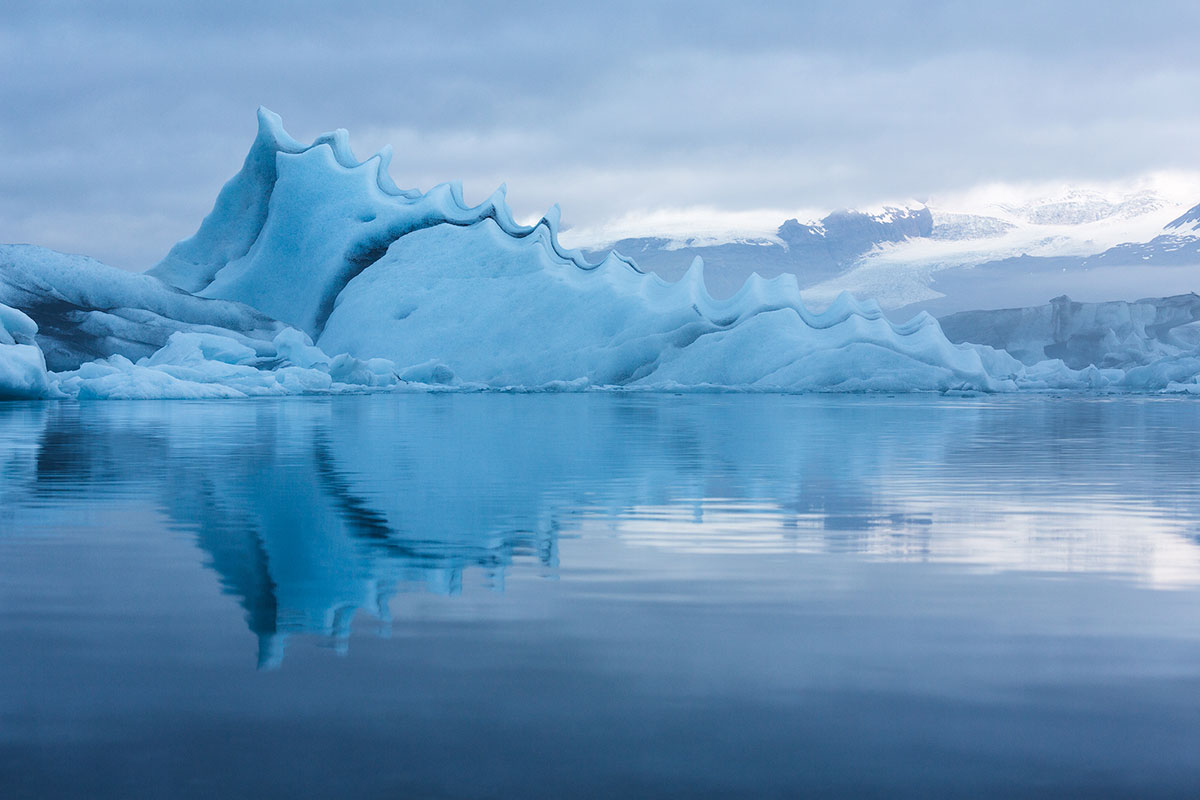
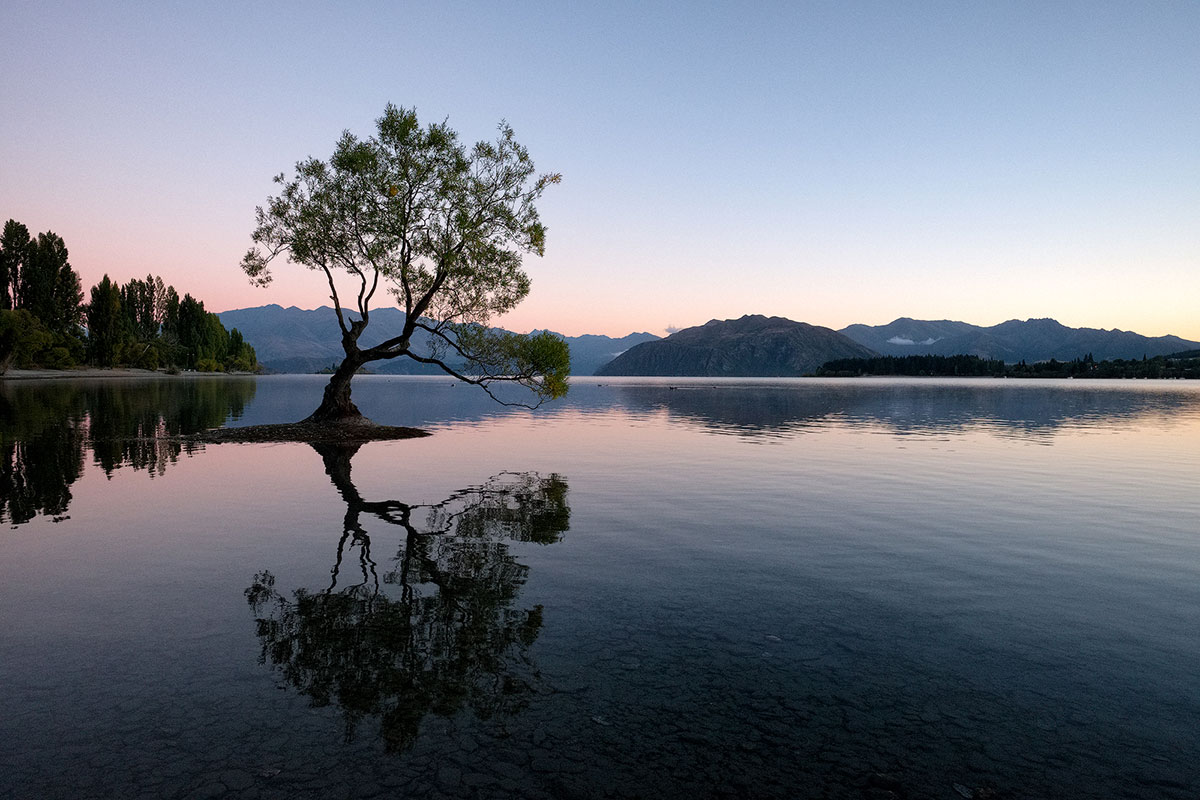
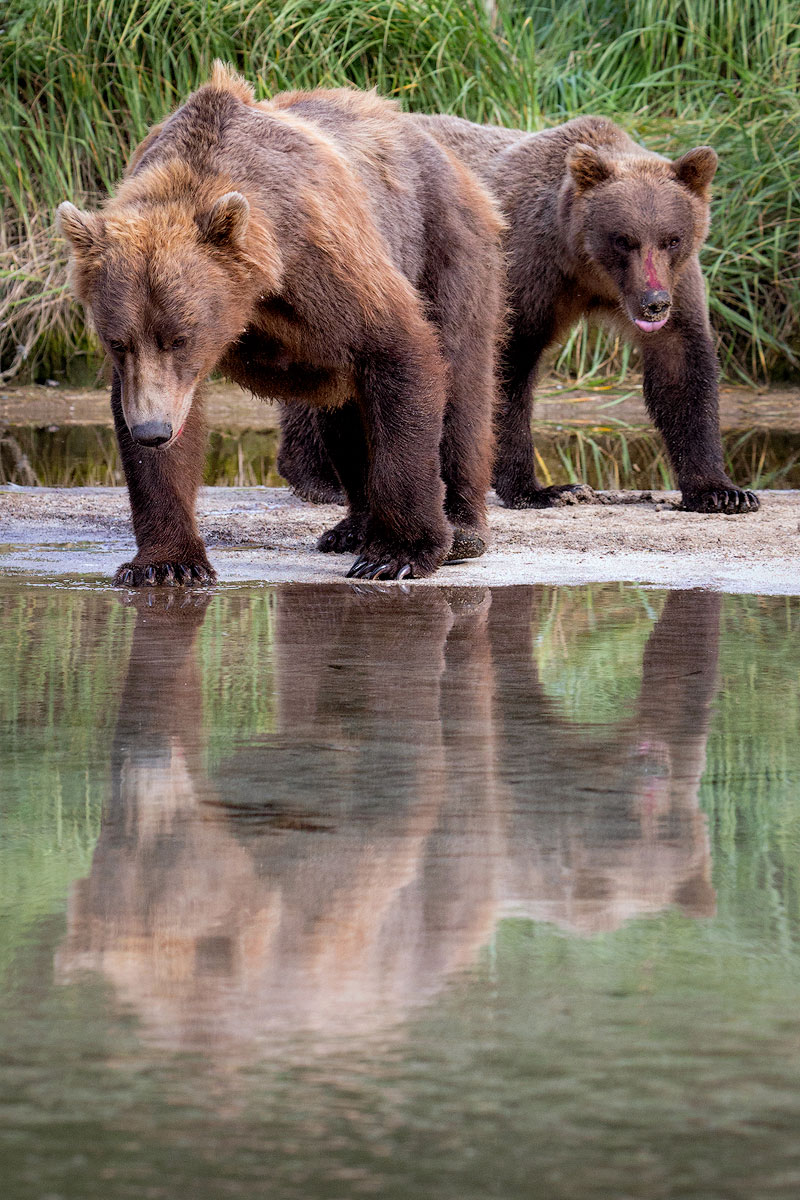





Very good read thanks
I'm trying to upload photos for the free Challenges but I can't find where I can do it on your page. Could you please inform? Many thanks